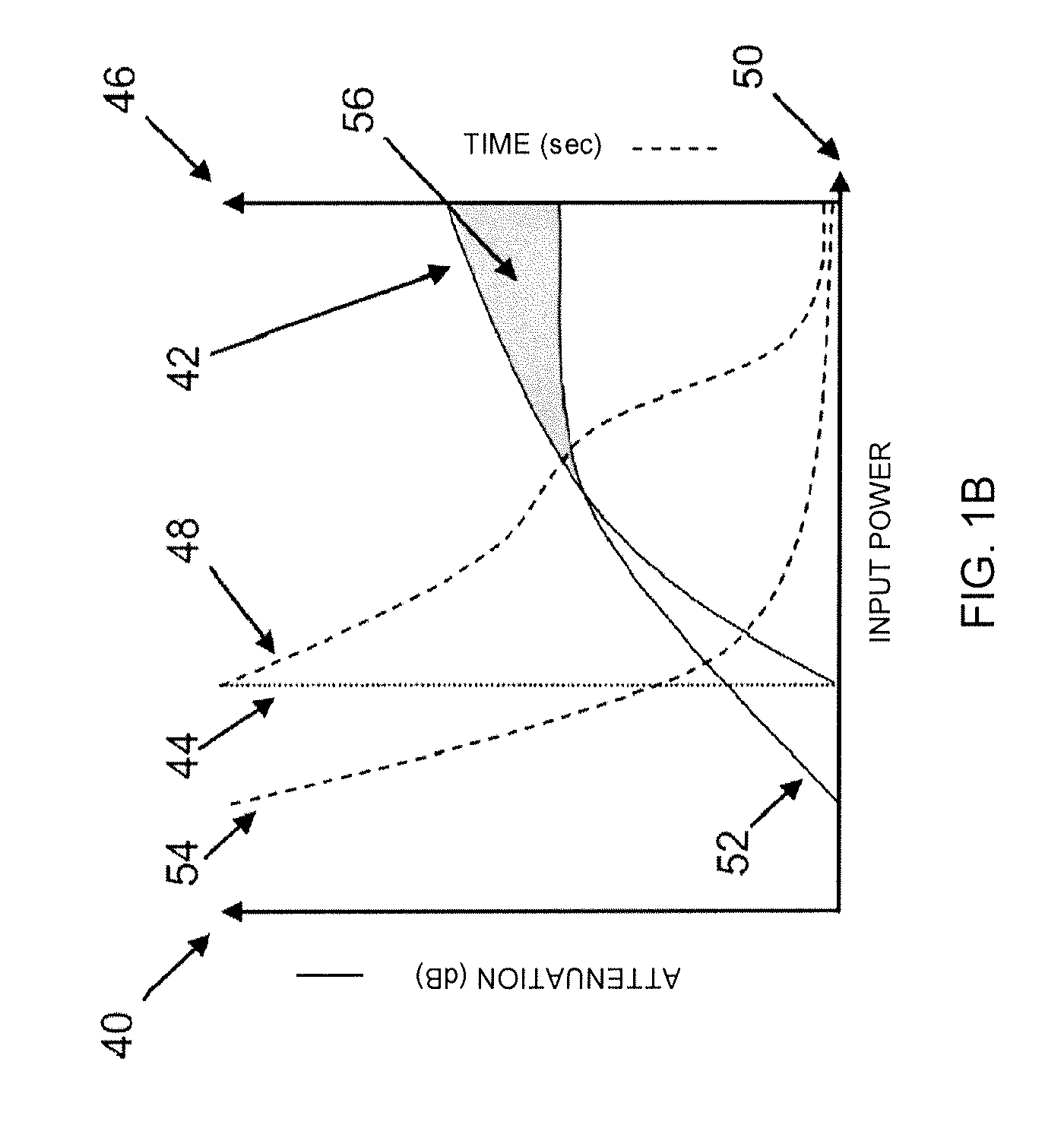Loudspeaker protection circuit
a protection circuit and loudspeaker technology, applied in the direction of transducer protection circuits, limiting amplitudes, electrical devices, etc., can solve the problems of inability to adequately protect the transducer, the attenuation plateau of the lamp, and the significantly less of the lamp, so as to increase the control of the rms, protect the lamp filament from over-power conditions, and reduce the effect of nois
- Summary
- Abstract
- Description
- Claims
- Application Information
AI Technical Summary
Benefits of technology
Problems solved by technology
Method used
Image
Examples
first embodiment
[0041]Referring to FIG. 2A, a protection circuit 20 is shown constructed in accordance with a preferred first embodiment of the present invention. The protection circuit 20 is operable to provide fully adjustable dynamic attack timing & threshold, minimized insertion loss, gradual dynamic attenuation, high speed peak over-voltage protection, wide operational power range, optional load balancing and full-bandwidth operation through the use of a voltage detector, a timer, actuator, attenuator, regulator, and optional load balancer. The preferred loudspeaker protection circuit broadly comprises a rectification stage 22; a detection stage 24; a timing stage 26; an actuator stage 28; an attenuation stage 30; a regulation stage 34; and an optional load balancing stage 32.
embodiment 120
[0042]The rectification stage 22 is operable to derive two rectified signals, AREC and VREC, and broadly comprises a first rectifier circuit 40 followed by a subsequent second rectifier 42. The subsequent second rectifier 42 may be connected to the output of the said first rectifier 40, referred to as AREC, and is used to create a second rectified signal VREC. The first rectified signal, AREC, is supplied to the detection stage, 24, and the timing stage, 26. These subsequent stages are designed with relatively low capacitance, thereby maintaining AREC as a time-varying, rectified audio signal. Output of second rectifier 42, VREC, is supplied to the regulation stage 34 which includes smoothing capacitance, thereby ensuring that VREC is a time-averaged voltage. Referring to FIG. 2B, a detailed example of the first-embodiment 120, illustrates one possible implementation of the rectification stage wherein the first rectifier circuit 40 is constructed as a full-bridge rectifier utilizing...
second embodiment
[0050]Referring to FIG. 3A, a protection circuit 220 is shown constructed in accordance with a preferred second embodiment of the present invention. The protection circuit 220 is operable to provide multiple stages of fully adjustable dynamic attack timing & thresholds, minimized insertion loss, multiple stages of gradual dynamic attenuation, high speed peak over-voltage protection, wide operational power range, optional load balancing and full-bandwidth operation through the use of multiple voltage detectors, multiple timers, multiple actuators, multiple attenuators, regulator, and optional load balancer. The second preferred loudspeaker protection circuit broadly comprises the same stages as discussed in regards to the first preferred embodiment; however, includes a plurality of detection stages 224&240, timing stages 226&238, actuation stages 228&236, and attenuation stages 230&242. The purpose of adding multiple detectors, timers, actuators, and attenuators is to allow attenuati...
PUM
 Login to View More
Login to View More Abstract
Description
Claims
Application Information
 Login to View More
Login to View More - R&D
- Intellectual Property
- Life Sciences
- Materials
- Tech Scout
- Unparalleled Data Quality
- Higher Quality Content
- 60% Fewer Hallucinations
Browse by: Latest US Patents, China's latest patents, Technical Efficacy Thesaurus, Application Domain, Technology Topic, Popular Technical Reports.
© 2025 PatSnap. All rights reserved.Legal|Privacy policy|Modern Slavery Act Transparency Statement|Sitemap|About US| Contact US: help@patsnap.com



